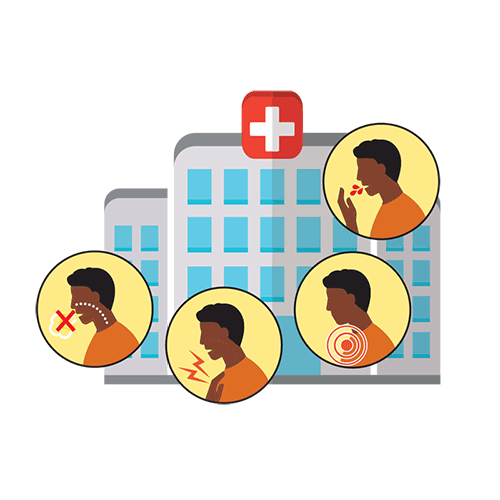What to know
This Steps to Better Health fact sheet provides easy-to-read information for people with sickle cell disease (SCD) about blood clots.

Overview
People with sickle cell disease (SCD) are at greater risk than the general population for forming blood clots. A blood clot in one of the large veins, usually in a person's leg or arm, is called a deep vein thrombosis (DVT). If a DVT is not treated, it can get bigger or break off and travel to the lungs. A blood clot in the lung is called pulmonary embolism (PE) and can cause death.
Call your provider as soon as possible if you experience any of the DVT symptoms listed below.
- Swelling of your leg or arm
- Pain or tenderness in your leg or arm not caused by an injury
- Skin on your leg or arm that is warm to the touch, with swelling or pain
- Redness of the skin on your leg or arm, with swelling or pain

Get medical attention immediately if you experience any of the PE symptoms listed below.
- Sudden, severe, and unusual shortness of breath
- Sudden, severe, and unusual chest pain
- Faster-than-normal or irregular heartbeat
- Coughing up blood

Talk to your provider about any factors that might increase your risk for blood clots. Some of these factors are:

Other risk factors include:
- Birth control that contains estrogen
- Being overweight
- Hormone replacement therapy that contains estrogen
- Family history of blood clots
- Trauma, particularly when the vein is injured
- Smoking
- Immobility or sitting for long periods
Talk to your provider to get the facts about anticoagulants (commonly known as "blood thinners"). The lifesaving benefits of these medicines often outweigh the potential risks. Still, it's important to learn about both before you start taking them.
Anticoagulants are medicines that lower your risk for developing future blood clots. Here is what you need to know:
- If you have a blood clot for the first time without any factors that might increase your risk, your provider will prescribe you anticoagulants for life.
- If you have a blood clot for the first time caused by a temporary event such as a hospitalization, surgery, or being unable to move because of a fracture, your provider will prescribe you anticoagulants for 3–6 months.
- If you have frequent blood clots as a result of factors that might increase your risk, your provider will prescribe you anticoagulants for life.
Although effective in lowering your chance of developing future blood clots, anticoagulants come with risks. For example, they can cause you to bleed more than usual when you have a cut.
Learn more about anticoagulants.
Learn more about the safe use of medicines.
This information is based on ASH SCD Guidelines: Cardiopulmonary and Kidney Disease.
